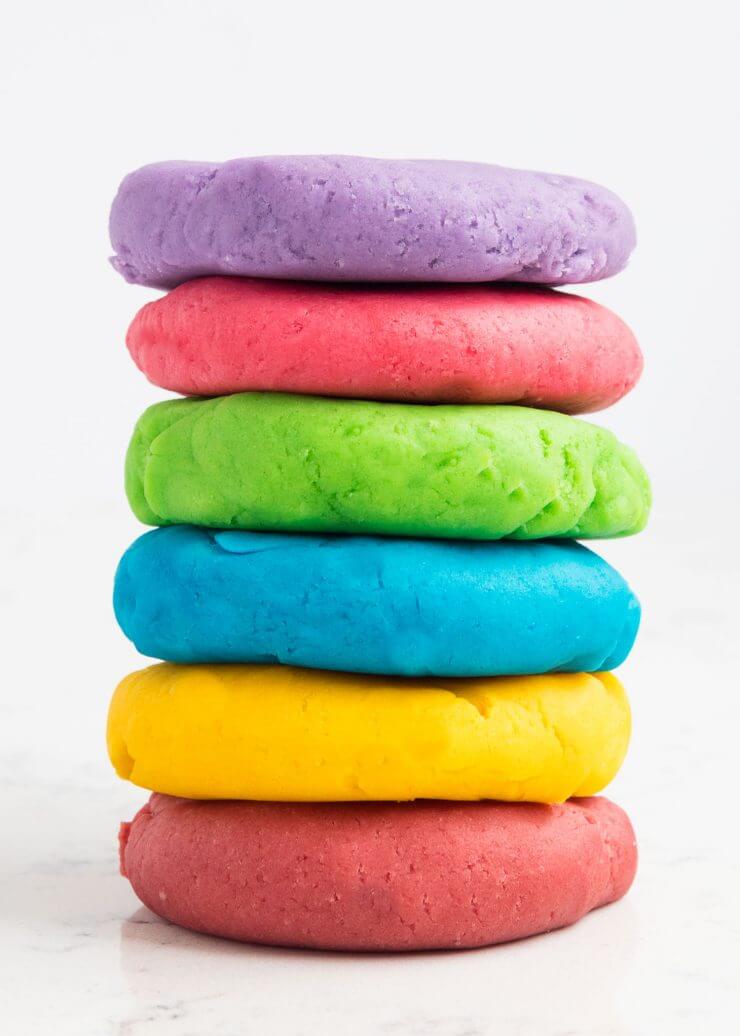Play Dough Cooking: A Recipe for Fun and Learning
Hello, wonderful parents out there! Are you ready to roll up your sleeves and dive into the colorful world of play dough cooking with your little ones? Whether you’re looking for a rainy-day activity or a new way to foster creativity and learning in your children, play dough cooking is a delightful experience that combines imagination, sensory play, and educational value. So, let’s get the fun started!
What is Play Dough Cooking?
Play dough cooking isn’t just a playful activity; it’s an amazing opportunity for kids to pretend, create, and learn all about food preparation, shapes, and even measurements, but without the mess of real ingredients. They get to mimic the process of cooking using colorful play dough as their food, creating everything from pretend pizzas to fantastical cupcakes.
Why Play Dough Cooking?
- Creativity Boost: Play dough allows children to shape and mold their ideas into something tangible, fostering their imaginative skills.
- Fine Motor Skills: Manipulating play dough helps children develop their hand-eye coordination and dexterity, which are essential for everyday tasks.
- Sensory Experience: The soft texture and vibrant colors of play dough provide a pleasing sensory experience, which can be calming for many children.
- Math and Literacy: As children measure, cut, and talk about their play dough concoctions, they are practicing early math and language skills.
- Cognitive Development: Engaging in play dough cooking can help children understand cause and effect, sequencing, and problem-solving.
Setting Up Your Play Dough Kitchen
To embark on this culinary adventure, you’ll need a playful yet safe setup for your little chefs. Here’s a quick guide to creating the perfect play dough kitchen:
- Gather Safe Tools: Collect rolling pins, cookie cutters, plastic knives, and other child-friendly utensils. Make sure all tools are clean and safe for children to use.
- Homemade or Store-bought Play Dough: You can buy ready-made play dough or make your own using simple ingredients from your kitchen. Homemade play dough can add another layer of fun (and even a delightful scent!) to the experience.
- Create a Cooking Space: Set aside a table or a corner of a room for your play dough kitchen. A plastic tablecloth or mat can help with easy clean-up.
- Use Real Cooking Accessories: To make it feel like a real kitchen, include small pots, pans, and dishes. Be sure they’re dedicated to playtime and not for real food use.
- Establish Rules: Setting some basic rules like keeping play dough away from the carpet and not mixing it with other toys will make the experience enjoyable and manageable.
Play Dough Recipes and Ideas
Are you excited to cook up some fun? Here are some playful “recipes” to get your little chef’s imagination cooking:
- Pizza Party: Roll out a large circle of dough for the base, then use different colors to create toppings. Talk about what toppings each family member likes and practice counting with slices!
- Bakery Bonanza: Make play dough bread, cakes, and cookies. Use cookie cutters for shapes, and craft small pieces of dough into fruit for toppings or fillings.
- Breakfast Buffet: Create eggs, bacon, and waffles with your play dough. Discuss breakfast traditions and encourage them to serve up breakfast in bed for their stuffed animals.
Play dough cooking is a whimsical journey into a world where creativity knows no bounds. It’s not just about squishing and shaping; it’s an intersection of play and learning, where your kids can experiment and grow. Get ready to cook up some fantastic memories!
Keep watching this space for more exciting play dough cooking ideas and activities that will keep your child engaged and help them learn through play. Stay tuned, as next time we’ll be sharing our favorite homemade play dough recipes and tips for thematic play dough cooking sessions that can entertain kids for hours!

Five Essential Tips for Parents Preparing for Play Dough Cooking
Before your little ones put on their chef hats and begin their play dough cooking session, there are a few important things to keep in mind to ensure a smooth and joyful experience:
- Non-Toxic Ingredients: Whether you’re purchasing play dough or making it at home, always opt for non-toxic ingredients. Kids can sometimes be tempted to taste their creations, so it’s crucial that everything they’re playing with is safe in case of accidental ingestion.
- Supervision is Key: Stay close to provide guidance and prevent any potential mishaps. While play dough cooking is a relatively safe activity, it’s always good to keep an eye out to help kids use tools correctly and prevent the dough from ending up in places it shouldn’t be.
- Embrace the Mess: While play dough is less messy than actual cooking, there will still be some cleanup involved. Prepare an area that’s easy to clean, and don’t stress about bits of dough getting out of place—it’s all part of the creative process!
- Inspire with Variety: Offer a range of colors and tools to spark your child’s imagination. The more options they have, the more detailed and involved their culinary creations can become!
- Pack Away Properly: Teach your children to take care of their play dough by storing it properly after use. Airtight containers will keep it soft and reusable for next time. This not only prolongs the life of the play dough but also instills a sense of responsibility and care for their belongings.
Benefits of Play Dough Cooking for Different Age Groups
Children of various ages can glean different benefits from play dough cooking:
- Toddlers (1-3 years): For the littlest chefs, play dough cooking is all about exploring textures and colors. It helps them develop their sensory awareness and fine motor skills as they pinch, roll, and flatten the dough.
- Preschoolers (3-5 years): At this age, children start to engage in more complex pretend play. They begin to construct narratives around their play dough creations, which supports language development and early literacy.
- School Agers (5+ years): Older children can start incorporating real-life cooking skills into their play, measuring out dough and following “recipes.” This age group also benefits from the problem-solving and planning aspects of play dough cooking.
Creating an Inclusive Play Dough Environment
Play dough cooking is a universal activity that every child should enjoy. Here are some ways to make sure everyone is included:
- Adjust Tools for Special Needs: If you have a child with special needs, look for tools with larger handles or textured grips that might be easier to hold.
- Non-Verbal Communication: For children who are non-verbal or have difficulty with language, use visual aids to help them understand the activity. Pictures of play dough foods or tools can help them make choices about what to create.
- Cultural Sensitivity: Encourage kids to make play dough foods from different cultures to help them learn about diversity and inclusivity through play.
By keeping these tips in mind, your play dough cooking activities will be set up for success, offering endless educational possibilities and good old-fashioned fun. Enjoy witnessing the joy and amazement on your child’s face as they turn simple dough into a feast for the imagination!
Remember that play dough cooking is more than just playtime; it’s a way of learning that engages young minds on multiple levels, from tactile stimulation to conceptual understanding. So go ahead, set up that play dough kitchen, and watch as your little chefs whip up dishes filled with creativity and love!
See more great Things to Do with Kids in New Zealand here. For more information see here
Disclaimer
The articles available via our website provide general information only and we strongly urge readers to exercise caution and conduct their own thorough research and fact-checking. The information presented should not be taken as absolute truth, and, to the maximum extent permitted by law, we will not be held liable for any inaccuracies or errors in the content. It is essential for individuals to independently verify and validate the information before making any decisions or taking any actions based on the articles.




